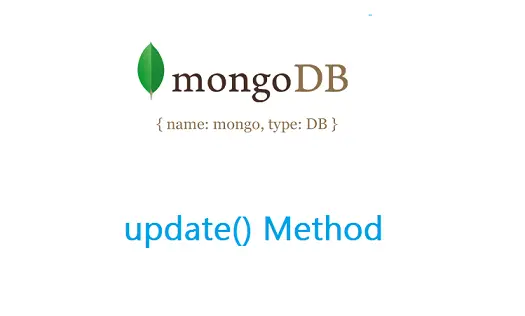Video tutorial to read XML file using jQuery ajax method.
AJAX full form: Asynchronous JavaScript and XML
We’ll also see the use of setTimeout() function.
Using AJAX technique, we fetch only the required data from the server without reloading the entire page.
In this video tutorial, we fetch the data present in XML format and display fetched content on the webpage and update it in real time, without reloading the html page.
HTML code
index.html
1
2
3
4
5
6
7
8
9
10
| <html>
<head><title>Reading an XML file using jQuery</title></head>
<body>
<ul></ul>
<script src="script/jquery-1.8.1.min.js" type="text/javascript"></script>
<script src="script/my_script.js" type="text/javascript"></script>
</body>
</html> |
<html>
<head><title>Reading an XML file using jQuery</title></head>
<body> <ul></ul>
<script src="script/jquery-1.8.1.min.js" type="text/javascript"></script>
<script src="script/my_script.js" type="text/javascript"></script>
</body>
</html>
Here we have 1 ul tag. We’ll load the list items dynamically using jQuery, from XML file.
XML File Content
corporateData.xml
1
2
3
4
5
6
7
8
9
| < ?xml version="1.0" ?>
<corporate>
<employee>
<name>Satish</name>
<age>25</age>
<company>Microsoft</company>
</employee>
</corporate> |
< ?xml version="1.0" ?>
<corporate> <employee> <name>Satish</name> <age>25</age> <company>Microsoft</company> </employee>
</corporate>
Here we have a base tag called corporate. Inside that we have employee details like name, age and company which is bound inside employee tag. Each employee will have his/her details inside separate/individual employee tag.
For more about XML, please visit XML category.
jQuery File: corporateData() function
my_script.js
1
2
3
4
5
6
7
8
9
10
11
12
13
14
15
16
17
18
19
20
21
22
23
24
25
| function corporateData() {
$.ajax({
url: "corporateData.xml",
dataType: "xml",
success: function(data) {
$("ul").children().remove();
$(data).find("employee").each( function() {
var info = '<li>Name: '+$(this).find("name").text()+'</li>
<li>Age: '+$(this).find("age").text()+'</li>
<li>Company: '+$(this).find("company").text()+'</li>';
$("ul").append(info);
});
},
error: function() { $("ul").children().remove();
$("ul").append("<li>There was an error baby!</li>"); }
});
} |
function corporateData() {
$.ajax({ url: "corporateData.xml", dataType: "xml", success: function(data) { $("ul").children().remove(); $(data).find("employee").each( function() { var info = '<li>Name: '+$(this).find("name").text()+'</li> <li>Age: '+$(this).find("age").text()+'</li> <li>Company: '+$(this).find("company").text()+'</li>'; $("ul").append(info); }); }, error: function() { $("ul").children().remove(); $("ul").append("<li>There was an error baby!</li>"); } });
}
Here we write a custom jQuery function called corporateData.
$.ajax() is a jQuery static method and it has a lot of properties. In this tutorial, we illustrate url, dataType, success and error properties.
Specify the url from which the data has to be fetched, along with its data type.
If the file gets parsed successfully, the function inside the success property gets executed. If there is an error, the error property function gets triggered.
Once the xml file gets parsed successfully, $.ajax method throws an object which contains xml file data. We catch this data with anonymous function present in success property.
Next, we clear any previous data got attached to the unordered list of html document.
Using the object, we find each employee tags present inside the XML file, fetch individual name, age and company names and then append it to the unordered list.
jQuery File: setTimeout() method
my_script.js
1
2
3
4
5
6
7
8
| function fetch() {
setTimeout( function() {
corporateData();
fetch();
}, 100);
} |
function fetch() {
setTimeout( function() { corporateData();
fetch();
}, 100);
}
Inorder to make sure our application fetches the fresh data from the XML file, we check the XML file after certain period of time.
Using setTimeout() method of jQuery:
setTimeout() takes two parameters, first one being the function names to be called and the second one being the time interval after which those functions has to be called.
using setTimeout() we have called itself( fetch() ) and corporateData() function. This makes sure, whenever the XML file gets updated, our application fetches the data and displays on our webpage, without refreshing the page.
jQuery File: call the functions to make it work
my_script.js
1
2
3
4
| $(document).ready( function() {
corporateData();
fetch();
}); |
$(document).ready( function() { corporateData();
fetch();
});
Make sure to call both corporateData and fetch method once the page loads. This makes sure the XML data is fetched before fetch functions tries to re-fetch the things.
jQuery File: Complete Code
my_script.js
1
2
3
4
5
6
7
8
9
10
11
12
13
14
15
16
17
18
19
20
21
22
23
24
25
26
27
28
29
30
31
32
33
34
35
36
37
38
39
| $(document).ready( function() {
corporateData();
fetch();
});
function fetch() {
setTimeout( function() {
corporateData();
fetch();
}, 100);
}
function corporateData() {
$.ajax({
url: "corporateData.xml",
dataType: "xml",
success: function(data) {
$("ul").children().remove();
$(data).find("employee").each( function() {
var info = '<li>Name: '+$(this).find("name").text()+'</li>
<li>Age: '+$(this).find("age").text()+'</li>
<li>Company: '+$(this).find("company").text()+'</li>';
$("ul").append(info);
});
},
error: function() { $("ul").children().remove();
$("ul").append("<li>There was an error baby!</li>"); }
});
} |
$(document).ready( function() { corporateData();
fetch();
});
function fetch() {
setTimeout( function() { corporateData();
fetch();
}, 100);
}
function corporateData() {
$.ajax({ url: "corporateData.xml", dataType: "xml", success: function(data) { $("ul").children().remove(); $(data).find("employee").each( function() { var info = '<li>Name: '+$(this).find("name").text()+'</li> <li>Age: '+$(this).find("age").text()+'</li> <li>Company: '+$(this).find("company").text()+'</li>'; $("ul").append(info); }); }, error: function() { $("ul").children().remove(); $("ul").append("<li>There was an error baby!</li>"); }
});
}
corporateData.xml and index.html files must be in the same folder.
Video Tutorial: Reading XML File Using jQuery AJAX Method
[youtube https://www.youtube.com/watch?v=Dj3MP5w0dpc]
Note:
Make sure you open the html file from a server(even from localhost), and not directly from a folder. XML and the files which are fetching XML data must be on the same server, otherwise XML data won’t be fetched.
Testing The Application
To test this small application, open the index.html file from the server, and then add / modify / delete any entry. Once you save the XML file, the content of XML file must get updated on the html file immediately without the page(index.html) being reloaded.

